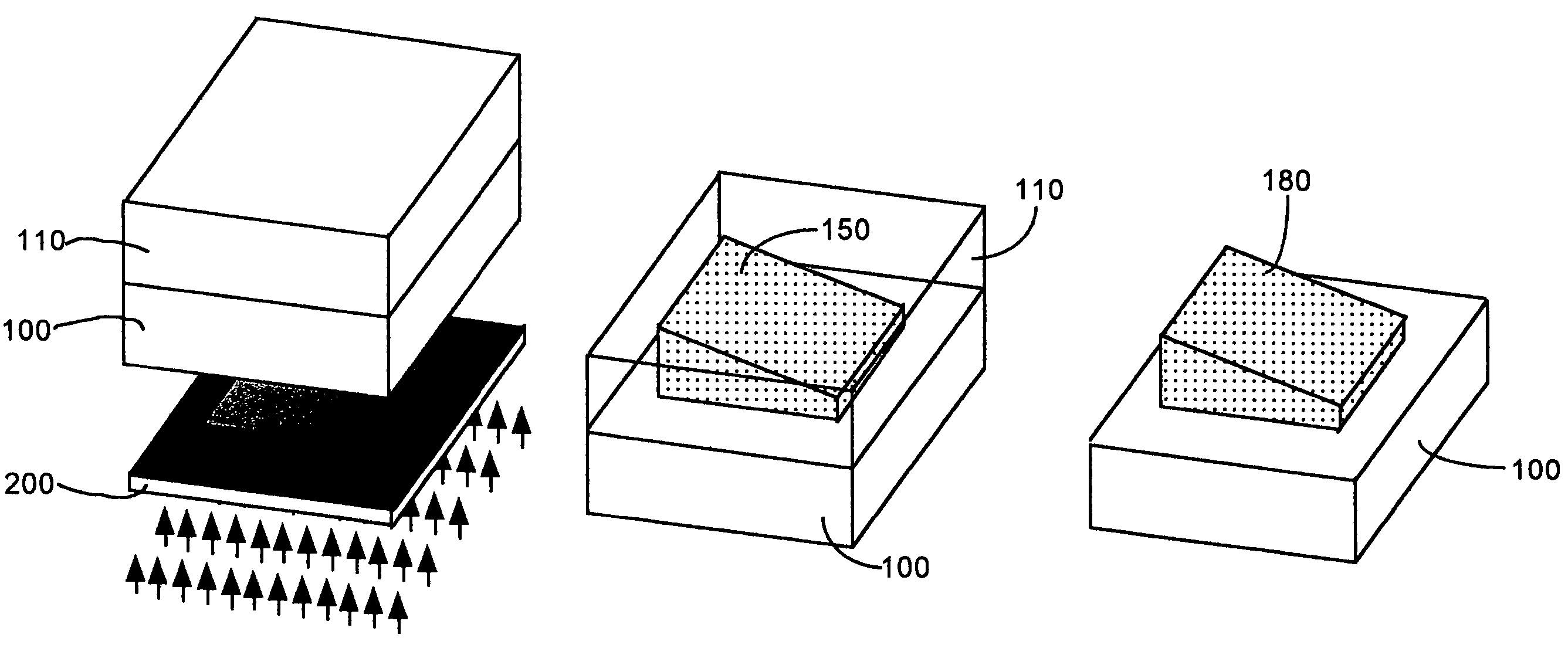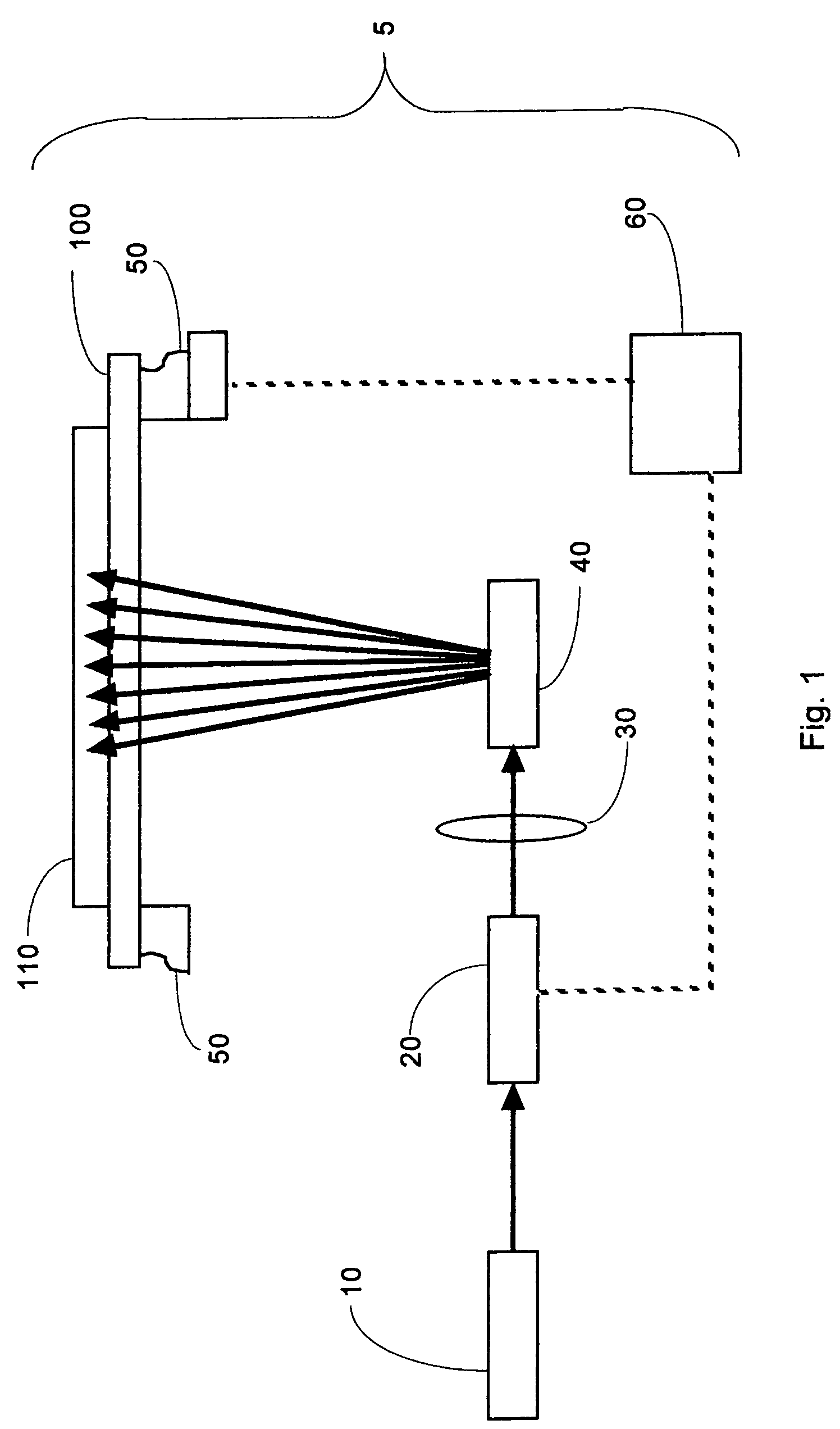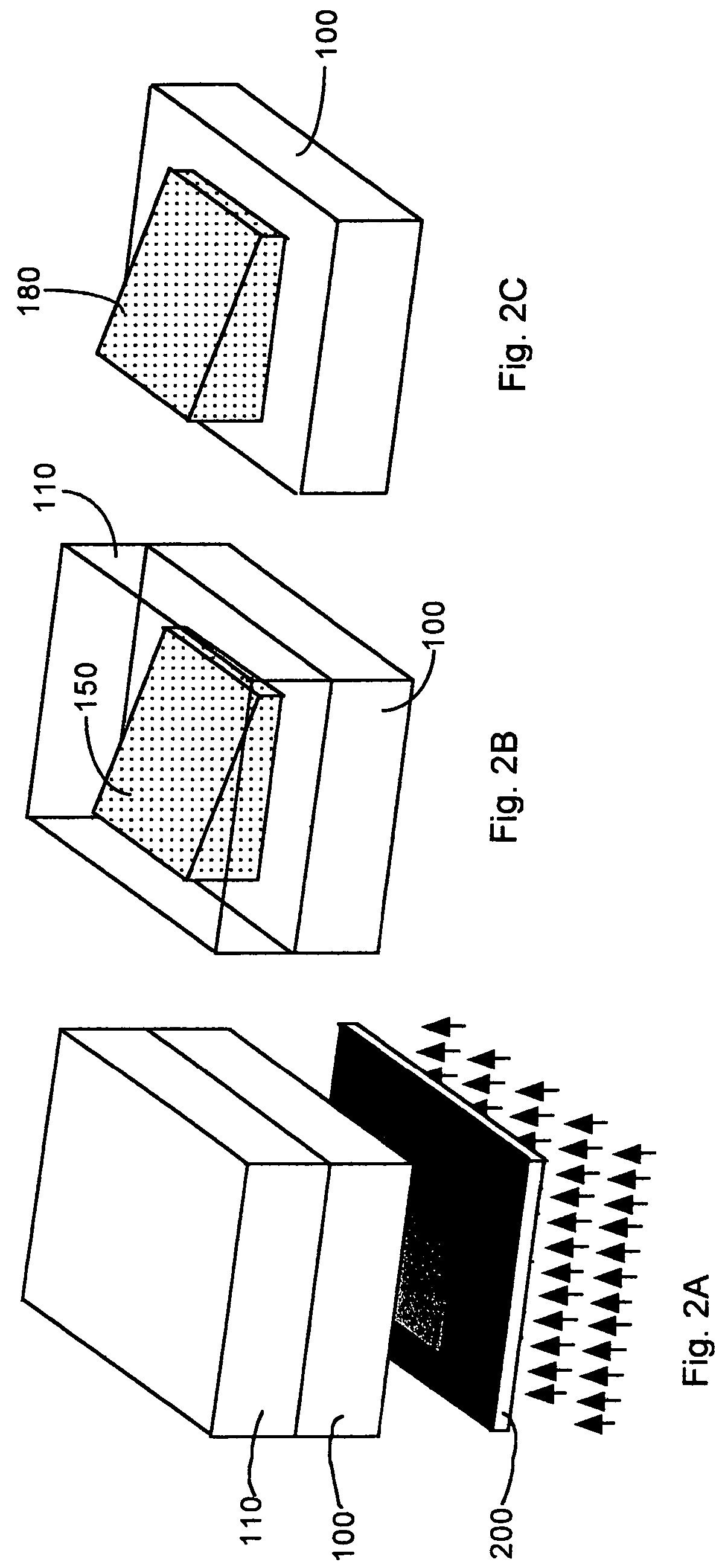3-D structures with smoothly-varying topographical features in photo-sensitive epoxy resists
a technology of epoxy resist and topographical features, which is applied in the field of photoresist material processing, can solve the problems of resist full thickness removal, uv light not being able to adequately penetrate the deeper-lying volumes of positive photoresist, and resist thickness
- Summary
- Abstract
- Description
- Claims
- Application Information
AI Technical Summary
Benefits of technology
Problems solved by technology
Method used
Image
Examples
Embodiment Construction
[0040]The present invention comprises a new process by which 3-D structures with smoothly-varying topographic features and continuously-varying thickness can be fabricated using one layer of SU-8, one mask, and one exposure and development process sequence. In one embodiment, the substrate is transparent or essentially transparent to the light needed for exposure of the SU-8. Thus, appropriate substrates include most glasses, quartz, and a variety of polymers.
Process Sequence
[0041]The following processing steps may be performed in accordance with one embodiment of the invention:[0042]1. Clean a substrate and apply an adhesion-promoter, if desired and / or necessary.
Subsequent steps may be performed in an orange room.[0043]2. Spin-on or otherwise apply a layer of SU-8 at least as thick as the thickest structure desired. For some applications, the thickness of the applied SU-8 layer may be 10%-20% thicker than the thickness of the thickest structure desired (or possibly even thicker). I...
PUM
| Property | Measurement | Unit |
|---|---|---|
| thickness | aaaaa | aaaaa |
| thickness | aaaaa | aaaaa |
| thicknesses | aaaaa | aaaaa |
Abstract
Description
Claims
Application Information
 Login to View More
Login to View More - R&D
- Intellectual Property
- Life Sciences
- Materials
- Tech Scout
- Unparalleled Data Quality
- Higher Quality Content
- 60% Fewer Hallucinations
Browse by: Latest US Patents, China's latest patents, Technical Efficacy Thesaurus, Application Domain, Technology Topic, Popular Technical Reports.
© 2025 PatSnap. All rights reserved.Legal|Privacy policy|Modern Slavery Act Transparency Statement|Sitemap|About US| Contact US: help@patsnap.com



